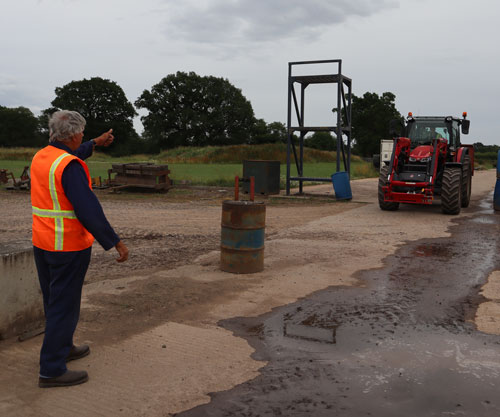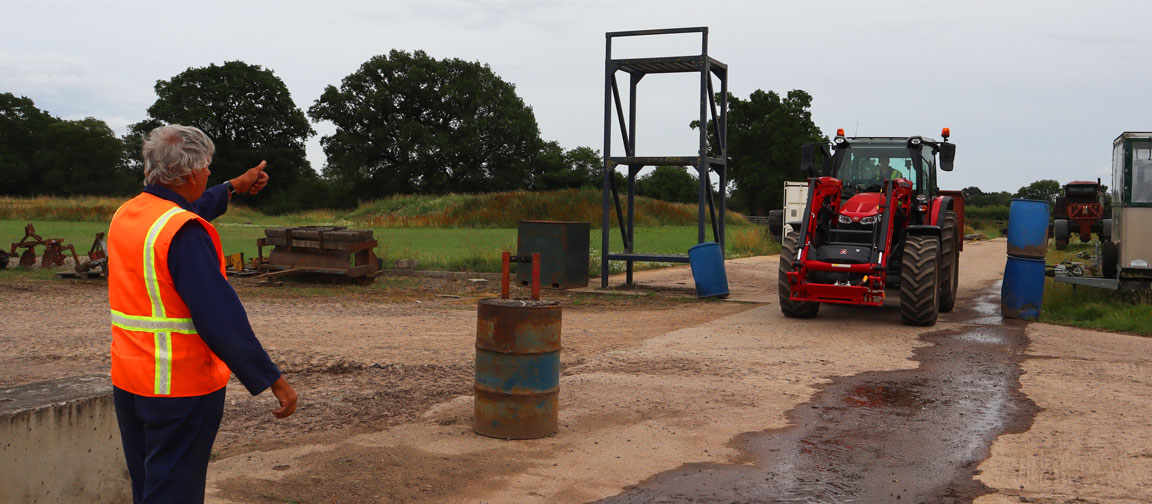Quick steps to improve farm safety
19 March: Site maintenance at 16:00 GMT today - if you are logged in at this time you will be logged out briefly.

Quick steps to improve farm safety
Quick steps to improve farm safety

It’s no secret that farming and growing has a poor safety record.
According to the Health and Safety Executive (HSE), UK agriculture has the worst rate of fatal injuries in the workforce of any of the nation’s main industry sectors, with 27 fatalities in 2022/2023.
In fact, the average rate of injury in farming is 21 times higher than the average across all sectors in that time.
Sadly, this is nothing new – agriculture has long held this unfortunate accolade.
But the good news is that there are often simple steps that can significantly reduce the chances of any such incident happening on your farm.
Why is farm safety important?
All farms have their hazards and risks. Large machinery, dangerous chemicals, unpredictable livestock, and even the heights and depths of stores can all pose a risk.
When you add time pressures to the mix, the stress can become overwhelming. Deadlines looming, projects piling up, and the constant feeling of being rushed can affect your mental and physical wellbeing.
The effects of the weather can also play a role in increasing stress levels. Whether it's dealing with extreme heat, cold, or unpredictable conditions, weather can add more difficulty to an already stressful situation.
Volatile markets can add another layer of stress, especially for industries heavily influenced by market fluctuations. The constant uncertainty and pressure to perform can create a high-stress environment that can be difficult to navigate. Additionally, working with family can bring its own set of challenges. Balancing personal relationships with professional responsibilities can be tricky, and conflicts within the family dynamic can add stress to the mix.
The added dangers of stress in the workplace
Overall, when you combine all these factors, it's easy to see how stress can significantly impact your well-being. It's important to recognize the signs of stress and manage it effectively to maintain a healthy work-life balance.
But all too often, stories of injuries and fatalities on farms start with these kinds of outside factors affecting the farmer’s approach to the task at hand.
And while having a serious injury or fatality happen on-farm is, of course, an enormously difficult thing to deal with, it is worth remembering that the courts are prepared to hit farm businesses with heavy fines if they are found to be in breach of health and safety regulations. Only in February this year, one farmer was fined £320,000 after a worker died on his farm.
Developing a safe process for each task on-farm and having the strength to follow that process, regardless of whatever else is happening, is an important step in ensuring you all stay safe.
What can you do to improve safety on your farm?
Employers should also provide all staff with suitable personal protective equipment (PPE). However, carrying out risk assessments of key tasks is important before issuing PPE. Doing this lets you determine whether a risk can be eliminated or reduced through other methods.
For example, it could be expected to provide staff with a hard hat, gloves, and goggles before cleaning a glasshouse's roof. But it might be possible to perform that task using a drone instead – thereby reducing the risks involved and lessening the need for PPE.
Identifying hazards and considering how they can be controlled is an essential part of risk management and a vital step in improving the safety of everyone on the farm.
This is important for all tasks in the business. You will need a different approach to analysing the risks of handling chemicals than you would take for an office risk assessment.
But it’s still important to analyse them. You can find more information in our quick article on producing a thorough risk assessment. We also have a lot more detail in our Essential Skills module on risk assessment, plus sector-specific information in our Learning Hub too.
Be positive and proactive with safety on-farm
Attitudes towards health and safety are changing, but there’s still more to do. All too often, farmers and growers start health and safety briefings with an apology - making the process more awkward rather than putting people at ease.
It may sound counter-intuitive, but being open and honest about your duty of care to staff and visitors can make them far more likely to pay attention to potential hazards.
By openly stating the level of risk involved in tasks and your legal requirement to outline how you manage those risks, you can ensure staff and visitors know they are also responsible for their own safety.
How can you protect your business?
Improving your understanding of the right legislation and investing in your staff can also help.
In fact, one of the core provisions of The Health and Safety at Work Act 1974 is that workplaces provide relevant health and safety training for staff.
TIAH members can log in to our Learning Hub and take our Essential Skills: the importance of farm safety module to learn about their legal obligations. Or they can read more on the relevant legislation by visiting Gov.uk or the Health and Safety Executive website.
What are the common types of hazards on farms?
In 2022-2023, animal-related injuries were the main reason for on-farm deaths, with eight reported fatalities, according to the HSE.
Following this were fatalities from falling from a height (four deaths) and getting hit by a falling object (also four).
But being struck by a moving vehicle is still the most common cause of death at work on-farm over the past five years, with nine people dying each year due to these collisions.
The industry also has a really poor record with non-fatal injuries, too. An estimated 9,000 workers reported a workplace non-fatal injury in 2022-2023.
This equates to about 3.7 per cent of the agriculture, forestry, and fishing workforce, which is more than double the rate across all industries. The closest industry in terms of non-fatal injury rate was construction, with a 2.6 per cent rate.
The leading causes of these injuries included:
- Slips, trips, and falls on the same level
- Falls from height
- Injured by an animal
- Struck by a moving/falling object
- Struck by a moving vehicle
- Strike with something fixed or stationary
- Injured while handling, lifting, or carrying
The wide range of common injury causes shows the need for all farm workers to be aware of the risks involved in all tasks, from manual handling to machinery management.
Where can I source some farm safety posters?
Raising awareness of workplace hazards is always important; farm safety posters can be helpful for this. Keeping posters around the work environment can remind your staff of the most prominent risks their jobs may incorporate and what they can do to control them.
We’ve collected some farm safety poster designs and signs you can use around your farm inside our farm safety online training. You can find these farm safety poster ideas and more in our Foundations of Farm Safety Learning Path or in several of our other farm safety modules.
When is Farm Safety Week
The Farm Safety Foundation, also known as Yellow Wellies, organises Farm Safety Week. The event aims to highlight how farmers and growers can reduce the risk of a serious incident on their farm and make the industry safer for everyone.
The event starts on 22 July 2024. During the week, the Farm Safety Foundation, along with TIAH, and other supporting organisations, will be reminding the industry of the importance of staying vigilant when tackling dangerous tasks on farm. We will also champion the great work farmers and growers do to keep themselves and their colleagues safe.
The Farm Safety Foundation also leads the Mind Your Head campaign each year. This gives farmers and growers important advice and helps with how they can look after their wellbeing.